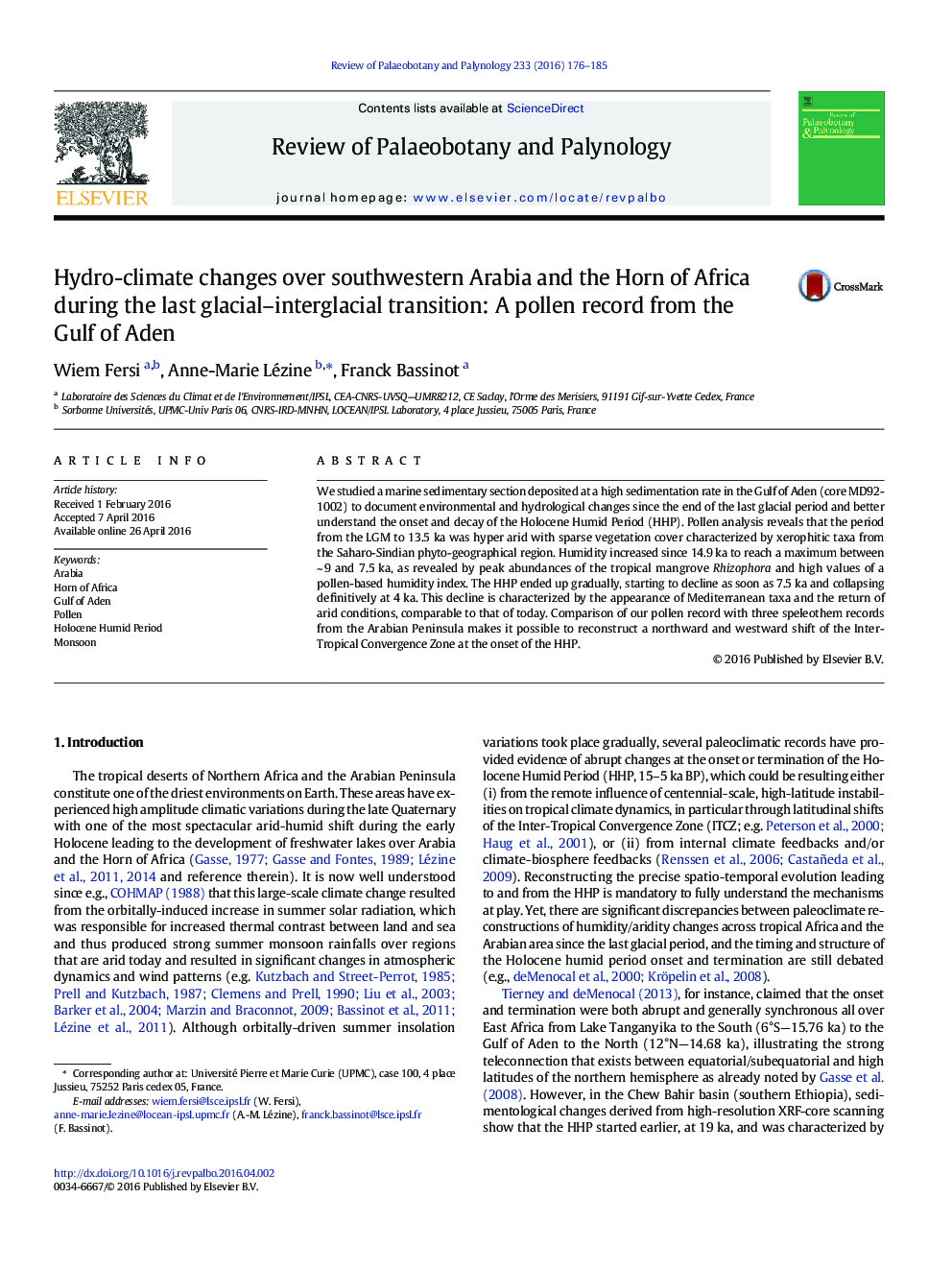| کد مقاله | کد نشریه | سال انتشار | مقاله انگلیسی | نسخه تمام متن |
|---|---|---|---|---|
| 4750053 | 1642464 | 2016 | 10 صفحه PDF | دانلود رایگان |
• Holocene Humid Period (HHP) reconstructed from a pollen record in the Gulf of Aden
• Humidity increased since about 14.9 ka BP and reached a maximum between 9 and 7.5 ka BP.
• Rhizophora% and speleothem records reveal NW movement of ITCZ at the HHP onset.
We studied a marine sedimentary section deposited at a high sedimentation rate in the Gulf of Aden (core MD92-1002) to document environmental and hydrological changes since the end of the last glacial period and better understand the onset and decay of the Holocene Humid Period (HHP). Pollen analysis reveals that the period from the LGM to 13.5 ka was hyper arid with sparse vegetation cover characterized by xerophitic taxa from the Saharo-Sindian phyto-geographical region. Humidity increased since 14.9 ka to reach a maximum between ~ 9 and 7.5 ka, as revealed by peak abundances of the tropical mangrove Rhizophora and high values of a pollen-based humidity index. The HHP ended up gradually, starting to decline as soon as 7.5 ka and collapsing definitively at 4 ka. This decline is characterized by the appearance of Mediterranean taxa and the return of arid conditions, comparable to that of today. Comparison of our pollen record with three speleothem records from the Arabian Peninsula makes it possible to reconstruct a northward and westward shift of the Inter-Tropical Convergence Zone at the onset of the HHP.
Journal: Review of Palaeobotany and Palynology - Volume 233, October 2016, Pages 176–185
